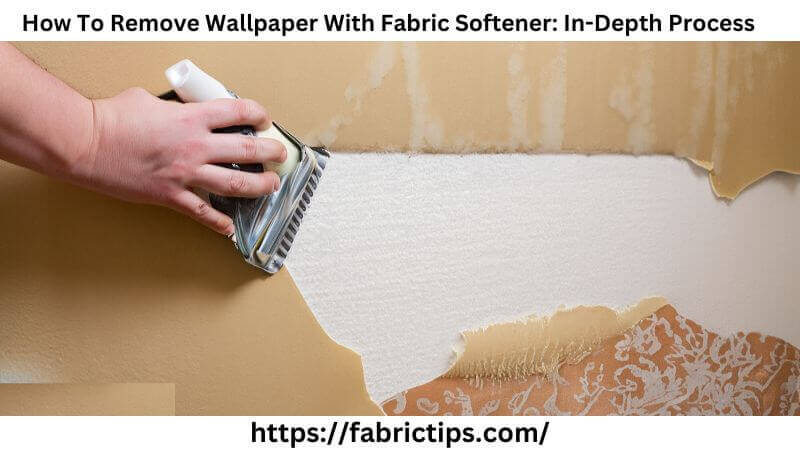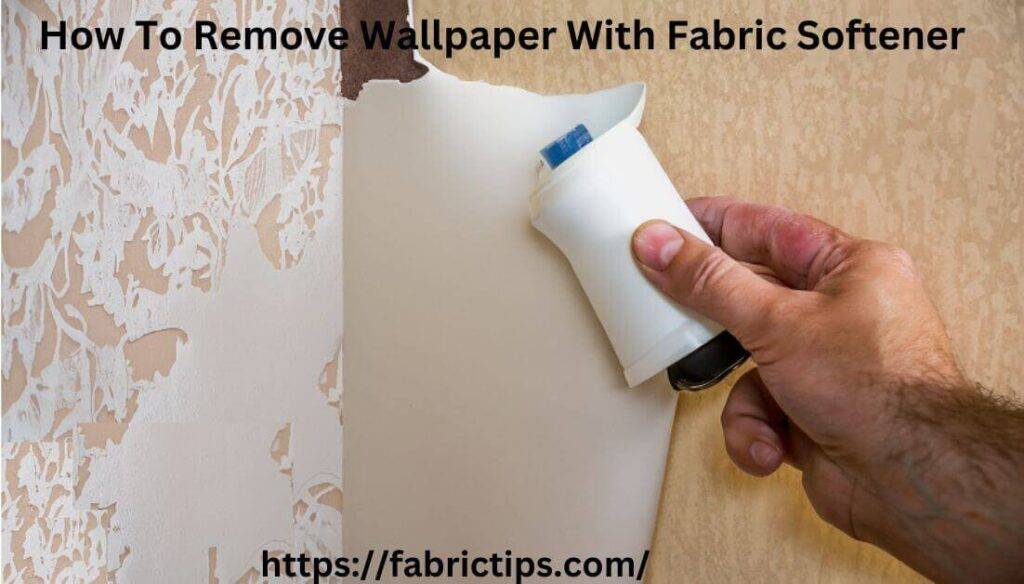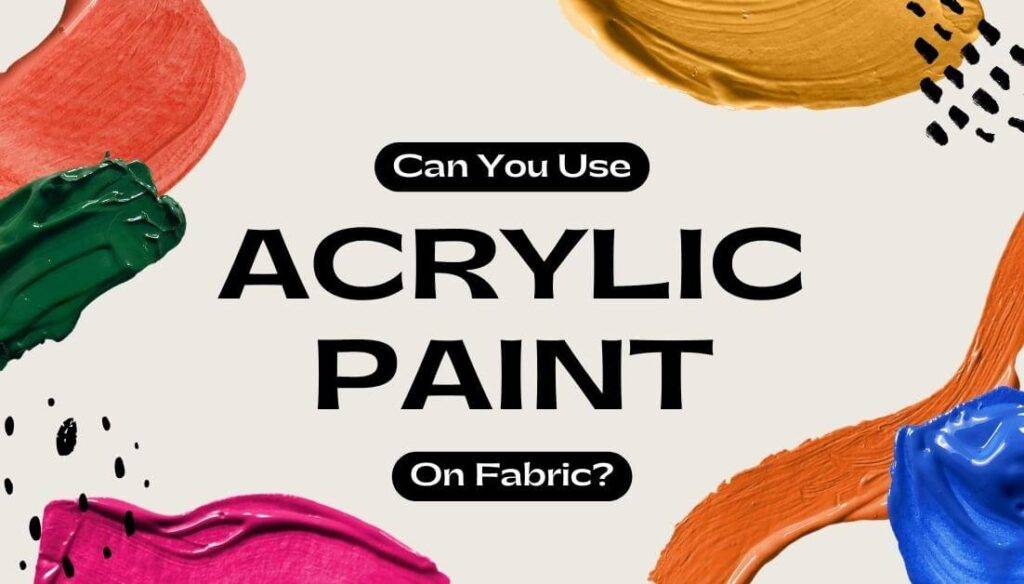Last Updated on December 13, 2025 by Wahid
Are you determined to remove that stubborn wallpaper? Actually, wallpaper glue is notoriously hard to remove. Luckily, there’s a relatively cheap way to get rid of it-fabric softener. Of course, fabric softener!
A delicate item has the ability to handle one of life’s toughest challenges. Do you want to know how to remove wallpaper with fabric softener? Pink kitten wallpaper can be intimidating, and using a product to make clothes smell fresh can take the hassle out of it. If fabric softener is applied to the walls, it breaks down the glue that is used to glue the wallpaper to the walls. In this way, the wallpaper will come off much more quickly & easily than it would normally do. Hence, you will have more time to spend decorating once the wallpaper comes off.
Well, let’s discuss more deeply the process of removing wallpaper with fabric softener in the article below, so that you can get a better understanding.
Materials You’ll Need
You will need the following things besides patience if you want to remove that unwanted wallpaper:
- Fabric Softener (Any kind will work)
- Hot water (Not quite boiling)
- Handheld 2-gallon garden sprayer
- Hand tool (5-in-1 Hyde tool is suggested)
- DIF Concentrate wallpaper remover
- Painter’s tape
- Large sponge
- Painter’s Plastic
- Safety Glasses
- Gloves
- Ladder
- Sandpaper
- Cloth
In order to achieve your new, modern, stylish design for those about to become bare walls, here are the steps that will guide you through the process below.
Before You Begin:
- Furniture should be cleared from the area where you will be working.
- Cover anything heavy or bulky in the area with a plastic tarp if you can’t remove it completely.
- The floors should be covered with plastic & taped to the baseboards whenever possible.
- Disconnect all light switches and outlets. The openings should be covered with plastic.
Please Note: Shut off the electricity in the room. The walls are going to get wet, so be careful not to get electrocuted. For extra precaution, keep kids and pets away from the area. Apparently, old wallpaper glue contains toxic fungicides. This fact might freak you out, so you might want to wear a mouth cover! Let’s get to work.
How To Remove Wallpaper With Fabric Softener: In-Depth Process

Step 1: Prepare The Working Room
- Get your workspace ready before you begin.
- In addition, make sure the area is covered with plastic sheets and remove all switch plates and wall outlets.
- After that, turn off the electricity in the room.
- If you’ll be working in the evening, you might want to bring a work lamp with halogen bulbs and an extension cord.
- Then, with a wallpaper scorer, make holes in the wallpaper so that you can soak in your solution.
Step 2: Hand Stripping
- Remove the old wallpaper as much as you can just by scrubbing your hands.
- Pull one corner away and rip it apart.
- Occasionally, old wallpaper will lift from the seams & corners on its own.
- By removing as much wallpaper as you can, the next steps will be easier.
- Ensure that you work your way around the wall or around the entire room, eliminating everything you can.
Step 3: Priming
- Next, prime the walls. You will need a utility knife to cut through the wallpaper.
- The homemade solution must be criss-crossed through the layers to work.
- Prying down just firmly enough to penetrate 1 or 2 layers should suffice.
- Alternatively, use a Zinsser wallpaper scoring tool and lightly press it onto the wallpaper until small holes appear.
- Next, wipe down the walls using a sponge dipped in as hot water as your hands can handle. When the wallpaper paste is loosened, it will come off more easily.
- As a result, the process will go by much more quickly and efficiently. Several minutes will be needed to help separate the glue from your wall with hot water.
- There might be some bubbles in the adhesive, but they should begin to dissolve away naturally. Do your best to pull it off.
Step 4: Apply Fabric Softener
Can fabric softener be used to remove wallpaper? How should I choose? Yes, no matter what fabric softener you use, it should work.
- Add 1 part softener to 1 part warm water.
- Apply the mixture to the wall with a spray bottle.
- Make sure it’s sufficiently saturated. Cut small holes in the wallpaper with a wallpaper scoring tool, so the liquid fabric softener can penetrate more readily.
- The solution must soak into the wallpaper for at least 15 minutes before reaching the adhesive.
- Let’s scrape!
Step 5: Scrape Away
- Scrape away with that paint spatula after the 15 minutes are up.
- Spatulas are the best tools for this task. Don’t forget to remove the glue beneath the wallpaper as well.
- A little more solution may be needed in some areas.
- Let the wall dry completely after this step is complete. In this stage, the process takes the longest, the best time to dry is 24 to 48 hours.
- Make sure you open the windows in the room or plug-in fans facing the wall (only during nice, dry weather, otherwise more humidity will enter the room, extending the drying process).
- After double-checking that the walls are dry, sand them down to remove hardened adhesive residue and wallpaper tags. After carefully inspecting, wipe down the walls with damp cloth. With a dry cloth, follow it behind.
Step 6: Decorate!
- Regardless of whether you prefer painting, hanging wallpaper, or reclaiming it from wood.
- Don’t forget to consider the room’s color & decor scheme when making changes to ensure everything blends well.
- Take a moment to give yourself a pat on the back for all your hard work!
Finally, after the adhesive has been loosened properly, the final scrape is necessary. Once again, grab your scraper and get started. Then, if you notice stubborn glue patches, smear on more solution & scrape them off.
Here’s Another Method For Removing Wallpaper

Remove Wallpaper With “Vinegar”
There’s a natural, chemical-free, & inexpensive method for removing wallpaper — it uses ingredients you probably already have in your house. Pour equal parts vinegar & warm water into a spray bottle, suggests a paint and wallpaper expert.
Then, apply the mixture to the wallpaper and let it soak for around 15 minutes. Vinegar’s acetic acid should dissolve the paste because it acts as a solvent.
Remove Wallpaper With “Putty Knife”
Whether you use commercial wallpaper-removal products or something you already have at home, pull the paper upward starting at the bottom corner. To make the process easier, use a wide putty knife.
You may be able to peel it off like a banana, but sometimes you’ll have to peel it more forcefully. In addition, scraping excessively can damage the sheetrock underneath.
Finally, pour hot water into a bucket, add a tablespoon of dish detergent, and use a sponge to scrub the walls. You’re finished! Just rinse it with water & use a dry towel to dry it.
Remove Wallpaper With “Steamer”
Wallpaper steamers soften the glue bond between wallpaper and walls by using hot water. When the wallpaper & paste are heated, it breaks the bond between the wall and the paper. In theory, with a little gentle pressure, the paper should be able to come loose from the wall.
When your steamer is on, don’t refill it with fresh water. To avoid any extra mess, unplug the machine for a few minutes before refilling the water tank.
Cover The Existing Wallpaper With New Wallpaper
It is even possible to hang a new wallpaper over an old one. You should first apply an oil-based primer, over the paper that is already in place. Skim or float (or lightly cover) the seams between the old wallpaper and the wall so that the lines are hidden. After that, you can apply the brand-new wallpaper directly over it.
Beware Of Sticky Residues While Removing Wallpaper
It’s really wise to check the walls after removing all the paper. If you paint over leftover residue, it can appear greasy in patches, or even worse, come away from the wall. In some cases, an adhesive can remain on the wall and cannot be removed by scraping. This is when WD-40® Multi-Use Product comes to the rescue.
Dab some product onto the adhesive with a cloth. Allow the fast-acting formula of WD-40® to break down the adhesive for a few minutes. If there are really stubborn spots, you might need to apply a little bit more! After that, wipe the sticky deposit away with another clean cloth.
FAQs
01. Do fabric softeners really remove wallpaper?
When applying fabric softener to walls, it breaks down any glue used to adhere to wallpaper. By doing this, the wallpaper comes off much more easily than it usually does, allowing you to spend more time decorating.
02. To remove wallpaper, how much fabric softener is needed?
To remove wallpaper effectively, there are 2 types of homemade solutions: Solution #1: Add 1/4 cup fabric softener to 3/4 cup hot water. Solution #2: Add 1/3 vinegar to 2/3 boiling water.
03. What is the effective home remedy to remove wallpaper?
Making your own wallpaper cleaning solutions is possible, by mixing 1/3 vinegar with 2/3 hot water, or mixing 1/4 fabric softener with 3/4 hot water. A spray bottle or sponge can work best to apply. Applying chemicals should be started at the top and worked your way down.
04. How can wallpaper be removed quickly?
Make holes in the wallpaper with a scoring tool. The paper should be soaked using a spray bottle. The water should work its way through the slits in the covering. After waiting about 10 minutes, use a putty knife to scrape off the paper.
05. How do you remove difficult wallpaper?
It involves mixing equal amounts of white vinegar and water. Pour the liquids into a spray bottle and spray them over the wallpaper you wish to remove. A few minutes later, you’ll be able to start scraping off the wallpaper with your scraper.
06. Does soapy water work for removing wallpaper?
Add a small amount of washing up liquid to a bucket of warm water. Paint the wall with soapy water after applying it with the paintbrush. It will penetrate the wallpaper more easily if you work from the bottom up, since surface tension will be broken.
07. What dissolves wallpaper?
Vinegar, especially distilled white vinegar, usually works best for home improvement projects. Especially difficult glues may require a commercial wallpaper stripper, but vinegar is an effective alternative as well.
08. Can I use baking soda on wallpaper?
If you are trying to remove ink or non-washable marks, use baking soda mixed with water. Once it reaches a paste consistency, rub it on the stained area using clothes. You should be able to remove the stain by rubbing it gently. If the wallpaper is very strong and durable, you can use rubbing alcohol.
09. How do you remove 100 year old wallpaper?
If you would like to remove older, untreated wallpaper, use a garden sprayer loaded with water while applying wallpaper removal solution liberally. Allow the wallpaper to soak for 15-20 minutes and then begin peeling it off using a scraper or dull putty knife.
11. How do you remove wallpaper without damaging plaster?
One of the most simple, efficient, and economical ways of removing old wallpaper from plaster walls is by using a liquid remover. In most cases, the remover eliminates a lot of scraping and hard work. Whenever possible, it’s recommended to perform a test area before beginning the process to identify any potential problems.
Words Of Wisdom
Fortunately, how to remove wallpaper with fabric softener is now clear to you. Getting rid of that old, outdated wallpaper won’t be difficult. Even the most stubborn wallpaper can be removed on your own with the right technique and tools.
If you intend to replace your old wallpaper or just want a quick touch-up, a fabric softener will be of great help. As a result, you can transform your walls into something fresher and more modern. This article will be perfect if you have no previous experience with fabric softeners. Additionally, non-fabric softener techniques will be ideal for beginners.


